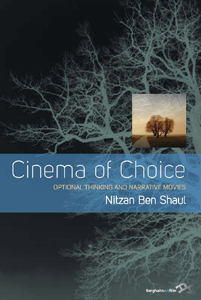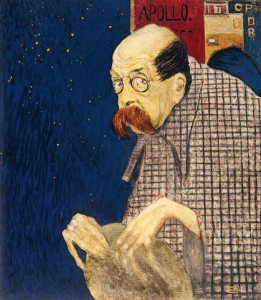 Nitzan Ben-Shaul is the author of Cinema of Choice: Optional Thinking and Narrative Movies, which will be released by Berghahn this month. His book explores films such as Sliding Doors, Run Lola Run, Inglourious Basterds, and Rashomon that present alternate narrative paths and uses these films to examine how standard linear films close down thinking processes, while arguing that optional thinking in film can be stimulating and rewarding. Here, he answers questions about his research and topic.
Nitzan Ben-Shaul is the author of Cinema of Choice: Optional Thinking and Narrative Movies, which will be released by Berghahn this month. His book explores films such as Sliding Doors, Run Lola Run, Inglourious Basterds, and Rashomon that present alternate narrative paths and uses these films to examine how standard linear films close down thinking processes, while arguing that optional thinking in film can be stimulating and rewarding. Here, he answers questions about his research and topic.
1. What drew you to the topic of cinema that proposes alternate narrative paths?
I was initially drawn to these movies when working on my book on interactive cinema (Hypernarrative Interactive Cinema: Problems and Solutions, Rodopi, 2008). Being concerned there with drama-guided interaction I found movies like Run Lola Run, Sliding Doors, and Rashomon to be excellent models for devising engaging interactive movies given their bifurcating narrative paths. I also produced a feature length interactive movie entitled Turbulence (2009) based on my research into interactive movies. I then asked myself what is the added value of these films and realized that they encourage optional thinking, that is, they get you thinking about options in life, a process that most movies actually derail by their encouraging closed-mindedness in their one-track narrative trajectory leading in an apparent strict causality to a relieving closure. Continue reading “Interview with the Author- Nitzan Ben-Shaul, Author of Cinema of Choice: Optional Thinking and Narrative Movies”
Tag: interview
Interview with the Editor- Gemma Blackshaw, Co-Editor of Journeys into Madness: Mapping Mental Illness in the Austro-Hungarian Empire
 Gemma Blackshaw, along with Sabine Wieber, is one of the editors of Journeys into Madness: Mapping Mental Illness in the Austro-Hungarian Empire. In her own contribution to the volume, she discusses the work and life of Viennese author and poet and Peter Altenberg. Here, she answers questions about her research and herself.
Gemma Blackshaw, along with Sabine Wieber, is one of the editors of Journeys into Madness: Mapping Mental Illness in the Austro-Hungarian Empire. In her own contribution to the volume, she discusses the work and life of Viennese author and poet and Peter Altenberg. Here, she answers questions about her research and herself.
1. What drew you to Peter Altenberg as a topic?
A caricature of Altenberg was chosen as the poster image for the Madness & Modernity exhibition I curated with Leslie Topp and Sabine Wieber, which looked at the relationship between mental illness and the visual arts in Vienna circa 1900 (Wellcome Collection, London and Wien Museum, Vienna, 2009-10). It was a last-minute addition to the exhibition, gratefully received from the Neue Galerie Museum for Austrian and German Art in New York, and I had little time to research its history. I touched upon Altenberg’s own experience of what was termed ‘nervous disorder’ in the accompanying catalogue in an essay on the artist Oskar Kokoschka, who painted Altenberg’s portrait in 1909, and made a mental note to follow up what seemed to me to be an intriguing set of questions: was Altenberg as ‘mad’ as he appeared in the caricature; did an answer to that question even matter; what were the circumstances of his being institutionalised; what was the value and the differences in being represented, and representing yourself, as ‘mad’? These questions formed the starting point of a long research journey which became so compelling a trail that I produced not only this essay but also a documentary film collaboration with artist and filmmaker David Bickerstaff titled Altenberg: The Little Pocket Mirror. Continue reading “Interview with the Editor- Gemma Blackshaw, Co-Editor of Journeys into Madness: Mapping Mental Illness in the Austro-Hungarian Empire”
